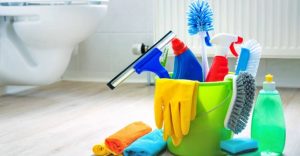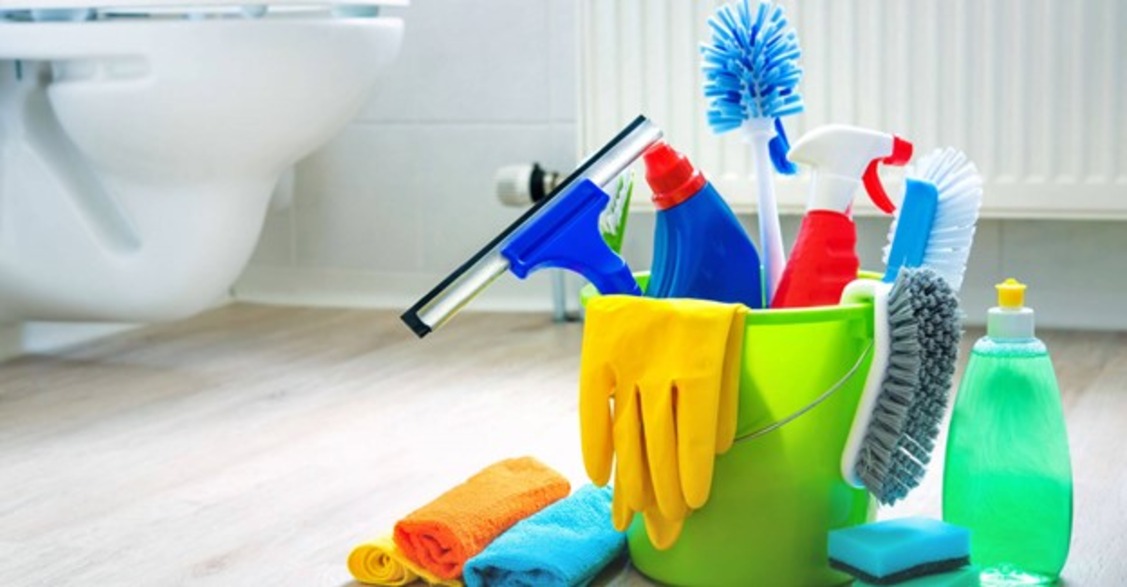Your hygiene consumables procurement costs you more than the line price. In fact, the unit cost could be less than half of the picture. The real costs may surprise you, and they impact your whole facility.
For example, employing these three common cost-cutting tactics won’t work on the full costs:
- drilling down into a spreadsheet
- Negotiating unit costs with consumable products and cleaning chemicals
- purchasing in big order quantities
When comparing traditional in-house procurement management against engaging professional cleaning suppliers, there is one significant cost factor you could be overlooking in your analysis.
The Cost of Time
The biggest cost to your aged care facility is often not the money spent on products, it’s the valuable time your procurement is eating up.
You’re busy, your floor staff are busy, your facility managers are hectic – and you know it affects your decision-making and leadership.
You know your nurses would deliver better direct care with more time to do it. And it’s not like your team has spare time to spend managing procurement and administration.
The Case Study
We interviewed Alex (name changed for privacy), the Procurement Officer at a multi-site nursing home group in Sydney.
Alex and his colleagues were always ‘time-poor’, and all the processes that management put in place weren’t working efficiently. Rather than assessing the potential time savings and efficiencies of partnering with specialist cleaning chemical suppliers, the team were doing it themselves. So, Alex decided to take a closer look at the time cost, by working and tracking a full day of ordering hygiene consumables stock.
In the eye-opening exercise, Alex found ten time-consuming (and costly) touchpoints in his nursing home’s ordering process.
10 costly touchpoints of consumable orders
Let’s step through each of these in turn:
1. The Stocktake
Alex’s day in the life of a consumables order started with checking stock. His facility had five storage locations:
- the nurses’ glove storage
- the kitchen consumables cupboard
- the laundry chemicals system
- the washroom supplies cupboard
- the main consumables storage room.
As Alex peered into dark cupboards and pulled aside half-empty disinfectant bottles, he ticked off the items – chemicals, paper goods, PPE… Several listed items couldn’t be found, while others had overflowing boxes stockpiled at the back of the storage room.
It took Alex 40 minutes before he was sure he’d checked every item.
SUMMARY
Touchpoint: Checking Stock
Time taken: 40 minutes
Areas for Improvement:
• Numerous storage areas
• No system for organizing consumables
• No review of overstocked goods
2. The Purchase Order
To enter the PO, Alex had to get into the stock system. It took a few minutes to load, then he had to ask around for a spare system licence.
There wasn’t a standing order for him to edit. He had to curl over his keyboard entering all the tiny printed codes, and worse, his own scribbled writing!
Remember how he thought he’d checked all the codes? Not quite. Two items – stored at the other end of the building – needed rechecking. After 20 minutes, Alex could save his purchase order.
SUMMARY
Touchpoint: Entering the purchase order
Time taken: 20 minutes
Areas for Improvement:
• Slow and limited system
• No standing order
• Missed items
3. The Approval
Emailed purchase orders usually took 2-3 hours to get approval. If there were no queries, it was a quick formality that took 5 minutes of management time.
Alex sent off the paperwork to his manager. After an hour, the order was approved in the system.
SUMMARY
Touchpoint: Approving the purchase order
Time taken: 10 minutes
Areas for Improvement:
• Inefficient submission & review system – email
4. The Order
Now the order could be sent. Alex was relieved this was a simple 5-minute job:
- wait for the system to reload
- access the approved purchase order
- print it as a PDF
- email it to the supplier
SUMMARY
Touchpoint: Sending the order to the supplier
Time taken: 5 minutes
Areas for Improvement:
• Order printed as a PDF, not directly entered into a suppliers’ portal
5. The Order Confirmation
Alex found that order confirmations were not often received – only 2 out of 5 orders would get a reply from the supplier. If items were back ordered, the facility wouldn’t know until the order was delivered.
Alex waited for 5 minutes for a notification. However, the order wasn’t confirmed until 48 hours later, and Alex noted the ETA and emailed the relevant staff.
SUMMARY
Touchpoint: Receiving the order confirmation
Time taken: 15 minutes
Areas for Improvement:
• Unreliable confirmations and notifications
• Manual ETA alert to staff
6. The Delivery
A previous order was scheduled to come in that day, so Alex headed down to the back. A truck pulled into the unloading area, and dropped the boxes near the rear access point. Alex went through each carton and ticked the items off against the delivery docket.
Sorting through the third box, Alex found there was an item missing, so he flagged down the delivery truck. 10 minutes of searching found the missing item tucked away in a corner, labelled incorrectly.
Total time taken – 25 minutes!
SUMMARY
Touchpoint: Receiving and checking delivery
Time taken: 25 minutes
Areas for Improvement:
• Boxes unloaded in an inconvenient location
• Manual delivery check (on paper)
7. The Distribution
Alex stacked the items back into the delivery cartons. Now he had to transport them along the corridors to storage. Usually the maintenance manager did this by himself, with or without the facility’s trolleys.
Alex put the boxes in front of the nurse’s glove storage, main storeroom and washroom supply cupboard. In the usual procedure, the nurses would put the cleaning chemicals away “when they had time”.
SUMMARY
Touchpoint: Distributing the order to storage
Time taken: 20 minutes
Areas for Improvement:
• One person usually handling several boxes
8. The Restocking
Instead of waiting until the nurses’ end of shift, Alex spent 20 minutes putting the consumables away in the three stores himself.
The main storeroom was full of out-of-date chemicals and paper goods, with no sorting system to be seen. This made it difficult to organise the consumables by type.
Three local storage points in the different wings of the home were out of toilet paper and paper towel, so he restocked those supplies.
SUMMARY
Touchpoint: Restocking the storage & washroom locations
Time taken: 20 minutes
Areas for Improvement:
• Inefficient process with several parties involved at different times
9. The Paperwork
Back at the desk, Alex manually reconciled the purchase order with the delivery paperwork. He found several ordered items missing and spent 10 minutes confirming the items were back ordered. (Admin typically spent up to 30 minutes on the phone with the supplier, trying to get an answer about an undelivered item.)
Then Alex receipted the purchase order and sent it to Accounts to confirm the invoice. All of this took 20 minutes.
SUMMARY
Touchpoint: Checking the paperwork and updating the system
Time taken: 20 minutes
Areas for Improvement:
• Paperwork manually reconciled
• Backorders not noted on supplier paperwork
10. The Payment
Accounts usually allocated the invoice to be paid about a week after it was received. Alex called them and found out it took them 10 minutes to do this.
SUMMARY
Touchpoint: Paying the invoice
Time taken: 10 minutes
What’s the bottom line? The key is to add up the time cost as well as the product cost
Alex and his team had spent 3 hours and 15 minutes in consumables procurement. Far more than the half hour he would have expected!
Those hours took them away from valuable time better spent in direct care, business development and other important responsibilities.
A normal order could take even more time because of:
- the different people doing it
- the time taken in communication
- the mistakes made by busy people.
Based on audits conducted in facilities across NSW & QLD, the industry average for aged care facilities is 1 hour and 15 minutes spent on ordering hygiene consumables.
Focusing on the time you spend in your procurement processes will give you back more value than a unit cost analysis ever could.
It will also give you a full picture of how partnering with experienced cleaning chemical suppliers and cleaning procurement professionals can take this time, responsibility and stress off your hands – and ensure you have everything on hand when and where you need it.
Some questions to consider:
- Is your facility losing hours of direct care time?
- Are your staff overworked due to an inefficient ordering process?
- Have you calculated your procurement time costs?
Talk to a cleaning procurement specialist
Just get in touch and we’d be happy to assist you with a time cost analysis of your facility or answer you.
Do you want
to know more?
Reach out one of our Specialists for a time cost analysis.






